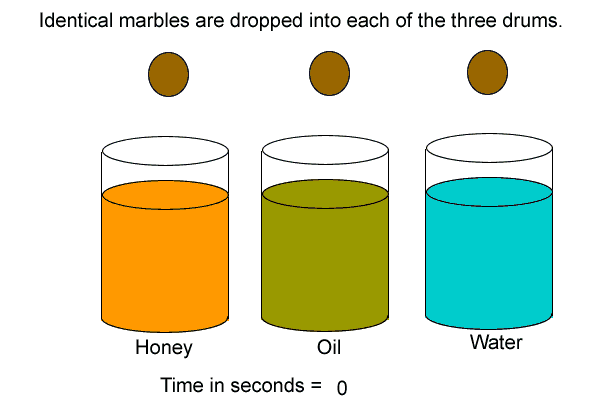Scientific
reports often include:
-a title
-an introduction
-an aim
-apparatus
-a method
-results
-a discussion
-a conclusion

1) Viscosity of oil, water and honey.
2) Set up three identical drums filled with the same volume of water, honey and oil respectively.
3) Out of the three liquids, oil is the most viscous.
4) Three identical marbles and three drums of the same size.
5) 40 litres each of water, oil and honey.
6) To find out which liquid is the most viscous out of honey, water and oil.
7) Viscosity of a liquid is a measure of how fast objects move through this liquid. Viscosity is related to the thickness of the liquid and the thicker the liquid the more viscous it is.
8) The marble sank to the bottom of the water tank quicker than in the oil and water.
9) The marble, in the drum of honey, sank to the bottom 3 seconds after the marble in the water had reached the bottom.
Which dot points are the student's
results ?
Which dot point is the aim?
Which dot point/s is/are the student's apparatus?
Which dot point is the title?
Which dot point is the introduction?
Which dot point is the conclusion?
Solution
A number of students reached different conclusions as listed in the table
below. Label each student as correct or wrong.
|
Student
|
Correct
or wrong
|
Conclusion
|
|
A
|
|
The
marble went through the water the slowest, therefore water is the
most viscous liquid out of the three.
|
|
B
|
|
Honey
is the most viscous liquid because the marble never reached the
bottom.
|
|
C
|
|
Water
is not as viscous as honey or oil.
|
|
D
|
|
Oil
slows down the objects moving though it the most. Therefore it is
not as viscous as honey.
|
See if you can work these out on your own.